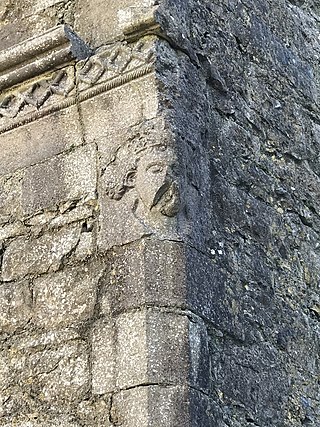
Ruaidrí mac Tairrdelbach Ua Conchobair was King of Connacht from 1156 to 1186, and High King of Ireland from 1166 to 1198. He was the last High King of Ireland before the Anglo-Normans invaded Ireland.

William de Burgh was the founder of the House of Burgh in Ireland and elder brother of Hubert de Burgh, 1st Earl of Kent and Geoffrey de Burgh, Bishop of Ely.
Conchobar Maenmaige Ua Conchobair, son of High King of Ireland Ruaidrí Ua Conchobair, was King of Connacht from 1183 to 1189. He was a military commander and opponent of the Norman invasion of Ireland.

Cathal Crobhdearg Ua Conchobair (1153–1224), was a king of Connacht. He was the youngest son of the High King of Ireland Tairrdelbach Ua Conchobair and brother to the last fully recognized High King Ruadri Ua Conchobair. His own sons Aedh Ua Conchobair and Feidhlimidh Ua Conchobair were kings of Connacht after him.
Toirdhealbhach Mór Ua Conchobhair anglicised Turlough Mór O'Conor, was King of Connacht (1106–1156) and High King of Ireland.
The city of Galway Ireland was built as a naval base and military fort by Tairrdelbach mac Ruaidri Ua Conchobair in 1124, refounded as a military outpost and town by Richard Mor de Burgh in 1230 - has been subjected to a number of battles, sacks and sieges. This article enumerates the history of military conflict in Galway.
Brian Luighneach Ua Conchobhair was a Prince of Connacht.

Domhnall Ua Lochlainn, also known as Domhnall Mac Lochlainn, was king of the Cenél Eogain, over-king of Ailech, and alleged High King of Ireland.
Tighearnán Mór Ua Ruairc, anglicised as Tiernan O'Rourke ruled the kingdom of Breifne as the 19th king in its Ua Ruairc dynasty, a branch of the Uí Briúin. He was a descendant of Uí Riagain, and one of the provincial kings in Ireland in the twelfth century, constantly expanding his kingdom through shifting alliances, of which the most long-standing was with Toirdelbach Ua Conchobair King of Connacht and High King of Ireland, and subsequently his son and successor Ruaidhrí Ua Conchobair. He is known for his role in the expulsion of Diarmait Mac Murchada, King of Leinster, from Ireland in 1166. Mac Murchada's subsequent recruitment of Marcher Lords to assist him in the recovery of his Kingdom of Leinster ultimately led to the Norman invasion of Ireland.

The O'Conor family are an Irish noble house and were one of the most influential and distinguished royal houses in Ireland. The O'Conor family held the throne of the Kingdom of Connacht up until 1475. Having ruled it on and off since 967, they ruled continuously from 1102 to 1475. Moreover, the O'Conor parent house the Uí Briúin and Síol Muireadaigh ruled Connacht on many occasions – but not continuously – between 482 and 956. The house of O'Conor also produced two High Kings of Ireland, Tairrdelbach Ua Conchobair and his son Ruaidrí Ua Conchobair, the last High King of Ireland. The family seat is Clonalis House outside Castlerea in County Roscommon.
Ruaidrí Ua Conchobair, called Ruaidrí na Saide Buide was King of Connacht, perhaps twice.
Muireadhach Ua Dubhthaigh was an Archbishop of Connacht, in Ireland.
Aedh Dall Ua Conchobair, Prince of Connacht, died 1194.
Murtogh Moynagh O'Conor, prince of Connacht, Ireland, flourished 1156-1210.
Tommaltach Ua Conchobair, bishop of Elphin and archbishop of Armagh, lived from c. 1150–1201.
Mor Ni Conchobair, Princess of Connacht and Queen of Munster, died 1190.
Brian Breifneach Ua Conchobair, Prince of Connacht, fl. 1156.
Maghnus Ua Conchobair, Prince of Connacht, died 1181.
Dubhchobhlaigh Bean Ua hEaghra, a.k.a. Dubhchobhlaigh Ní Conchobair, Queen of Luighne Connacht, died 1131.




